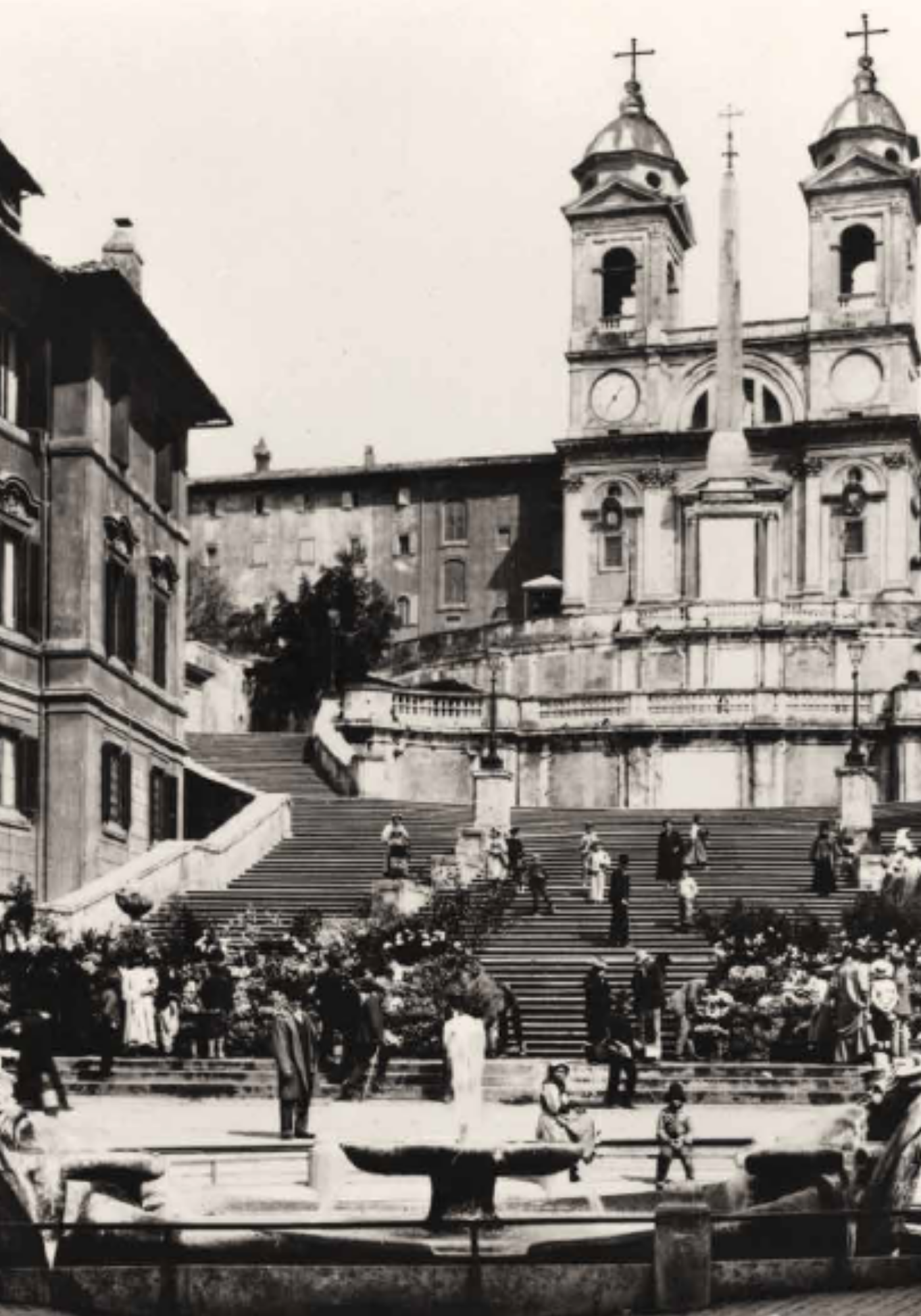The Royal Jeweler
Commissioned in the 1930s and composed of graduated circular-cut diamonds, highlighted with step-cut diamonds, this Petochi platinum necklace also detaches into four segments and may be worn as two bracelets.
“THE PETOCHI FAMILY, ROMAN JEWELERS FOR FIVE GENERATIONS, HAS ALWAYS BEEN PRESENT IN MY FAMILY AS A REFERENCE POINT SAFE AND RELIABLE. THEIR COMMITMENT TO BE GUARDIANS OF A TRADITION OVER A CENTURY GENERATES IN ME ADMIRATION FOR THE HISTORICAL LEGACY THAT FILTERS WITH INNATE MASTERY.”
— SELVAGGIA BORROMEO
Fratelli Petochi
From early humble beginnings to holding the prized Italian Royal warrant for jewelry design during the reign of the Italian monarchy in 1926, to the heady days of “La Dolce Vita” at their shop, where they regularly welcomed aristocrats, socialites, legends, and stars of the silver screen, the Petochi family has always stood for luxury, discretion, fidelity, quality, craftsmanship, and always impeccable service.
Trivigliano
The postcard-worthy hamlet evokes a bygone era, boasting a pair of beautiful old churches — Santa Ana Assunta and Santa Anna — with idyllic pedestrian streets—framed with picturesque archways — that wind in and around the circular foothills. Its centerpiece is a three-tower medieval castle, around which Trivigliano sprung up. Castello Petochi has been in the Petochi family since 1646. The second entry, from the center of the village, is a stately doorway to the 19th century palace of Bishop Gaspare Maria Petochi, Vicar of the Pope, who spent his summers and family holidays here.
A Palazzo for Petochi
After Mussolini’s grand public-works initiative leveled the Via dei Pontefici, the Petochis needed a new shop. Having by now earned the good graces of Italian nobles and royals, the Petochis were invited to relocate to an even more impressive address. Their new shop on Via Bocca di Leone occupied the courtyard of the 15th century Renaissance Palazzo Torlonia. The palazzo, originally built for Cardinal Adriano Castellesi de Corneto in 1496. It was previously owned by Henry VII and the Church of England and the Borghese family. The Torlonia family still own the property to this day.
In the shadow of The Spanish Steps
While the saying is true that all roads lead to Roma, Romans themselves know that all streets of Roma lead to Piazza di Spagna and the staircase at the Bernini Fountains. It is no surprise that Petochi relocated to a new location overlooking the Spanish Steps at Piazza di Spagna to be the center of it all in 1943.
The Big Apple
Many of Roma’s wealthy residents and the international jet-setters had fled to Monte Carlo, New York, the Caribbean, Palm Beach, and Palm Springs. Giuseppe and Domenico felt the time was ripe to give the 90-year-old family business a berth outside of Italy and to position it in another world-class city. By 1978, Petochi was showcasing its jewels on Madison Avenue
Domenico & The Micromosaics
A source of pride for the family was Domenico’s passion for the study and creation of micromosaics, a Roman artform that dates back to the Renaissance, and that reached a fever pitch in popularity around the mid-19th century. The original “Mosaici Minuti Romani” were akin to today’s postcards, as they were inspired by archeological discoveries and buildings of the time and were extremely popular with tourists.






